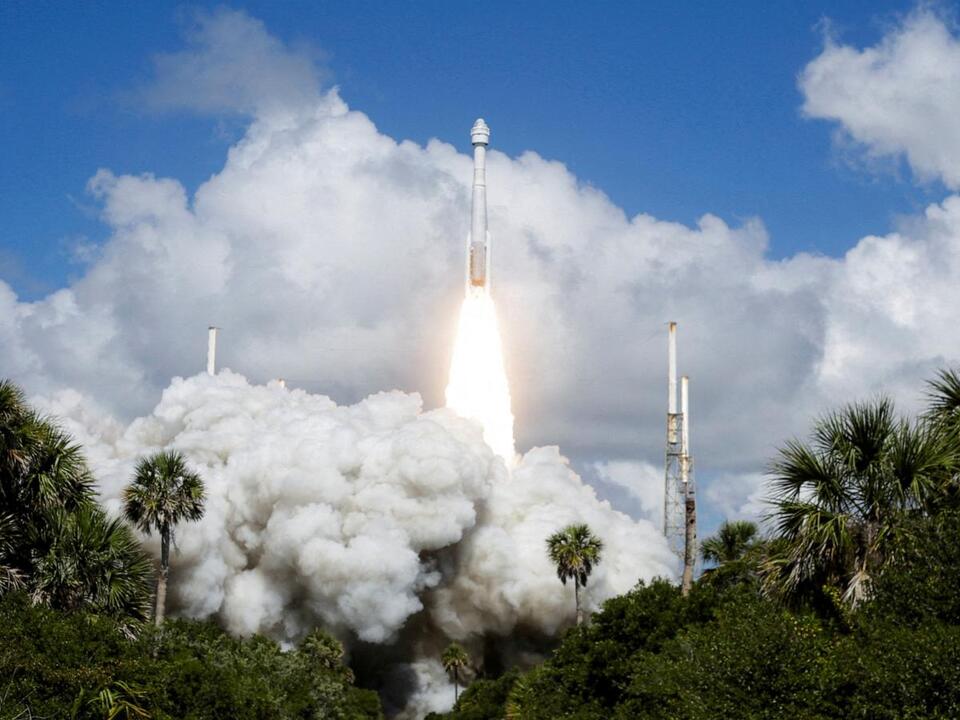Physical Address
304 North Cardinal St.
Dorchester Center, MA 02124
Physical Address
304 North Cardinal St.
Dorchester Center, MA 02124

Boeing’s Starliner spacecraft undocked from the International Space Station (ISS) on Friday, beginning its journey back to Earth. This mission was significant as it marked the spacecraft’s first uncrewed return after a prolonged stay in orbit.
The undocking occurred at 6:04 p.m. EST, and the event was broadcast live on NASA’s website. Viewers heard live commentary stating, “OK, she’s on her way home,” as the Starliner successfully separated from the space station.
Nasa and Boeing officials are aiming for a landing at White Sands Space Harbor in New Mexico, expected to take place around 12:03 a.m. EST on Saturday, September 7. Following the landing, a news conference will be held to discuss the mission’s outcomes.
Astronauts Barry “Butch” Wilmore and Sunita “Suni” Williams conducted the first crewed test flight in June 2024, which was originally planned for a week-long stay in space. However, the return was delayed due to issues encountered with the spacecraft, leading to a revised return plan that would now have them traveling back on SpaceX’s Crew-9 Dragon spacecraft in February 2025.
Starliner forms part of NASA’s Commercial Crew Program, which aims to evaluate Boeing’s spacecraft for certification to undertake regular missions to and from the ISS. This test is crucial for ensuring that the vehicle can support future human spaceflights safely.
Before its departure, Wilmore and Williams made various preparations for Starliner, which included reconfiguring the seats for an uncrewed landing and organizing cargo for retrieval by ground crews. Additionally, the astronauts returned emergency hardware that had been stored inside the spacecraft to the ISS for further mission use.
NASA and Boeing officials have expressed strong confidence in Starliner’s systems and its ability to conduct a smooth landing. Steve Stich, program manager for NASA’s Commercial Crew Program, reiterated this confidence during a news conference, stating, “We have confidence in the vehicle… We’ve had two good landings so far, and we’re expecting another one on Friday.”
However, Starliner faced several complications even before its launch. Originally scheduled for a May 6 launch, it was delayed due to a problem with an oxygen valve on the United Launch Alliance (ULA) rocket responsible for sending it into orbit. This led to a rescheduled launch date of May 25, but further setbacks occurred when a small helium leak was found in the service module, prompting another delay until the spacecraft successfully lifted off on June 5.
Once in space, the spacecraft faced additional challenges, including multiple “small” helium leaks discovered only five days after it docked at the ISS. Despite these issues, NASA and Boeing assured that there was adequate helium remaining for the spacecraft’s return mission.
Last month, teams conducted ground tests at NASA’s White Sands Test Facility to evaluate Starliner’s thruster performance under conditions simulating those experienced during the flight to the ISS. The aim was to ensure that the thrusters would function properly upon undocking from the space station.
On August 24, NASA officially announced that astronauts Wilmore and Williams would not return to Earth aboard Starliner, marking another chapter in the ongoing development of this pivotal spacecraft.
The Starliner program is integral in advancing NASA’s objectives for human spaceflight, and working through these challenges is key to ensuring the safety and reliability of future missions.
Source: ABC News



